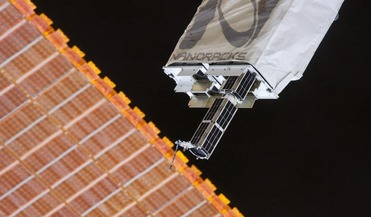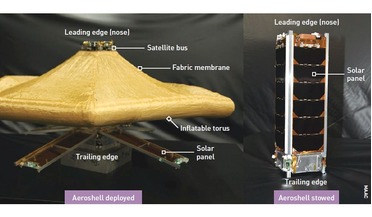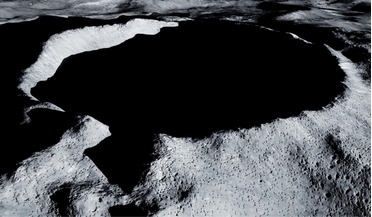 January 2020
Commercialising space exploration and development
January 2020
Commercialising space exploration and development
...NASA announcement on commercial platforms. Today, Nanoracks is creating the stepping stones in LEO (low Earth orbit) and GEO (geostationary orbit) that will allow us to populate the solar system with commercial laboratories. We are beginning to focus...
 February 2020
Aeroshells – from LEO to Mars
February 2020
Aeroshells – from LEO to Mars
... commercially valuable regions of outer space (second only to geostationary orbit, GEO), and is situated between altitudes of about 150 km and 2000 ... the ground requires less power than far away in GEO; and the cost of launch is less. These benefits...
 May 2020
Protecting areas of scientific importance on the Moon
May 2020
Protecting areas of scientific importance on the Moon
...into low Earth and geostationary orbit (LEO and GEO). Many of these were communications satellites with the ... investments needed for outer space exploration beyond LEO and GEO could jumpstart future projects and provide incentives to financial ...
 February 2021
On the nature of spacepower
February 2021
On the nature of spacepower
... testing, the SBIRS (Space Based Infrared System) GEO-5 satellite uses infrared surveillance to provide early missile warning... includes a combination of satellites and hosted payloads in GEO and highly elliptical orbit (HEO). He emphasises that the...
 June 2021
Is NewSpace really so new?
June 2021
Is NewSpace really so new?
... applications. Furthermore, the constellations will make use of multiple orbit inclinations to gain global coverage. Small satellites in GEO with shorter lifetimes, coupled with new advances in Software Defined Radio (SDR), allow these new ‘smallGEOs...
 November 2021
Space insurance and the future of risk management
November 2021
Space insurance and the future of risk management
..., even the stalwart communications satellite is evolving, most notably via the development of LEO constellations, but also in GEO. One of the arguments put forward by proponents of LEO constellations is that their technology is more readily updatable...